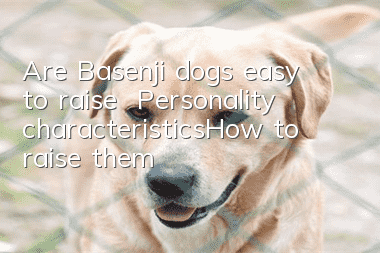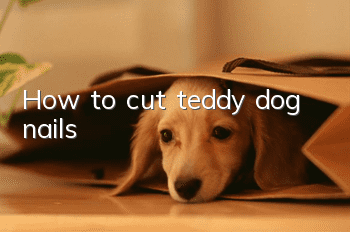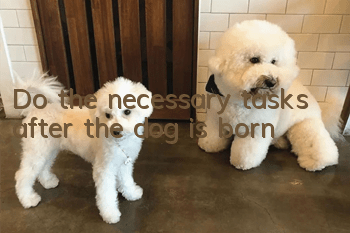Are Basenji dogs easy to raise | Personality characteristics_How to raise them?

Basenji, also called Basenji, is a type of hunting dog. Basenjis originated in Africa, where they were regarded as small short-haired hounds. The back is relatively short, and although the body structure is very compact, their legs are relatively long. There are wrinkles on his forehead, and he always holds his head high. They are agile and have very sensitive vision and smell. It is precisely because of their good physical fitness that the Basenji can show off its talents in hunting activities. The current Basenji can also be raised for hunting, but it has been raised as a companion dog in many places.
1. The historical origin of the Basenji dog
In fact, the Basenji dog appeared a long time ago. In the Zaire region in the 16th century, there were pure Basenji dogs, but some people called them Congo dogs or barking dogs. This dog was first given as a gift to the Pharaoh of ancient Egypt from the source of the Nile River. There are still paintings to prove that a Basenji dog can be seen lying at the feet of the Pharaoh. After the fall of the ancient Egyptian dynasty, the Basenji dog became popular among the people. There is a local Pygmy tribe in Congo. They found that Basenji dogs are very intelligent, agile and quiet, so they bred them specifically for hunting. Centuries passed, and a British explorer discovered the Basenji dog in the Congo. In 1895, he brought a pair of Basenji dogs to England, but they contracted infectious diseases and died soon after. It was not until 1937 that Mrs. Byron Logue brought it to the United States. In 1941, Alexander Feminster of Massachusetts bred the young Basenji he brought from Africa with Mrs. Logue's Basenji. Only then did they successfully breed new purebred Basenji dogs outside of Africa. In 1942, the Basenji Club of America was established, and the Basenji was certified by the American dog breed organization.
2. Appearance characteristics of the Basenji Dog
1. Overall
The Basenji is short in appearance and has a very short back. He is about 40 to 30 centimeters tall and weighs about 9.5 to 11 kilograms.
2. Head
The Basenji has deep wrinkles on its head, which gradually tapers from the eyes to the nose. The length is moderate, the nose is black, and the cheeks are clean and tidy; the ears are short, but upright and triangular.
3. Body
The Basenji is medium in length, with a straight back, a slightly broad chest, and an outward expansion, with an abdomen that is concave from top to inside. The limbs are strong and powerful, and the muscles are well-proportioned and strong. The heel is positioned relatively high, close to the back, and rolled up slightly.
4.Coat
The coat of the Basenji is relatively short and very fine and soft. There are many colors of hair, including brown, brown, white, chestnut, black and white, etc. There are many colors to choose from.select.
3. Characteristics of the Basenji Dog
Basenji dogs are naughty, active, and very energetic. They are also very kind to people and like to be in contact with people. But they are more indifferent when dealing with strangers, and their expressions are often aloof and arrogant. Basenji dogs live in groups, so they have strong leadership potential. However, if the leader is not determined before, they will often fight to choose the leader. The very curious Basenji enjoys occasional walks around the house. They are neat and tidy and will wash their faces like cats.
4. How to raise Basenji dogs
Basenji dogs’ daily feed should contain 300-350 grams of meat, and should be supplemented with oatmeal, sugar-free biscuits and other vegetarian foods. The amount is about the same as the amount of meat. The meat should be cooked first, cut into small pieces, mixed with vegetarian food (cooked) and added with water before feeding. Clean drinking water should be supplied 1-2 times a day, and should be increased appropriately in summer. The kennel should be located in a wind-proof, dry, clean place, and should be cleaned and disinfected frequently. This kind of dog is more likely to gain weight, so exercise must be indispensable in their life. If they don’t exercise, they will definitely gain weight. Every 5-7 days, remove tartar, earwax and eye mucus from it. Wash your eyes frequently with warm water to prevent ophthalmia and other diseases. Claws should also be trimmed regularly to facilitate walking briskly and avoid scratching the human body.
Guess you like it
Pyrenean Sheepdog | Boykin Hound | American Water Spaniel | Nova Scotia Duck Hunting Hound | Collie | Brittany
Welsh Springer Spaniel | Court Hal Sparrow | Griffin Basset | German Shorthaired Pointer | Cocker Spaniel
Wirehaired Fox Terrier | Swedish Lapphang | German Wirehaired Pointer | Norwich Terrier | Maremma Sheepdog | Doberman Pinsch
English Bulldog | Miniature Shitzer Terrier | American Pitbull | Black and Tan Coonhound | Miniature Pinscher | Flanders Cattle Dog
- Diagnosis and treatment of dog fever
- What should I do if my pet dog is allergic to vaccines?
- How to brush your dog’s teeth? What should I do if my dog refuses to brush his teeth?
- What should I do if my dog keeps scratching and biting?
- What are the most common oral and dental diseases in dogs? Dog Oral Care!
- What are the training tips for Australian Cattle Dogs?
- Research shows that dogs raised in cities are more likely to develop social anxiety than dogs raised in rural areas
- How to train a Great Pyrenees
- Why do dogs sigh?
- What are the symptoms of dystocia in dogs, and what should I do if my dog has dystocia?



